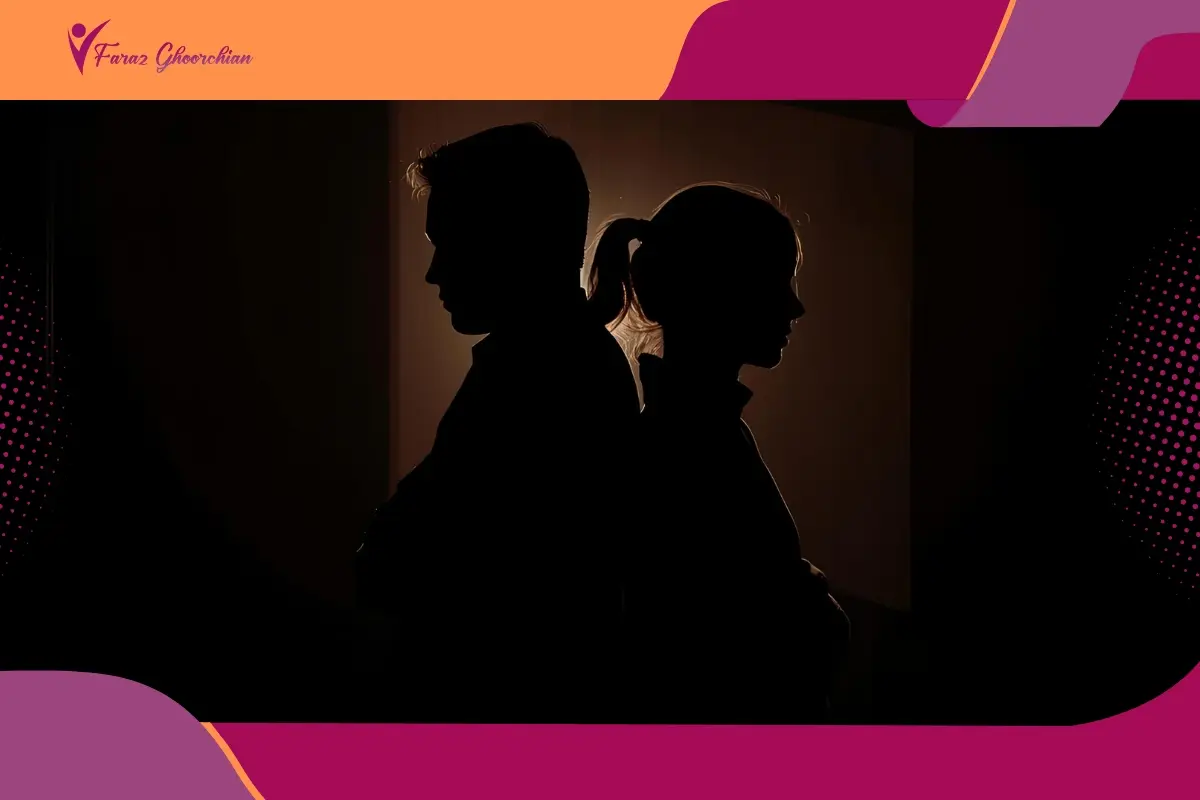Discover what negative bias psychology is, why the mind focuses on negative experiences, real-life examples, and practical ways to overcome it for healthier thinking.
- 1. Introduction
- 2. What is Negative Bias in Psychology?
- 3. Why the Brain Leans Toward the Negative
- 4. Negative Bias vs Positive Bias
- 5. Examples of Negative Bias in Daily Life
- 6. Psychology Bias Types: The Bigger Picture
- 7. 5 types of bias
- 8. Negative Self-Talk and Its Effects
- 9. Overcoming Negative Bias Psychology
- 10. Therapy, Growth, and Modern Applications
- 11. Conclusion: A Balanced Mindset
Introduction
Most people have noticed how one negative comment can overshadow a dozen kind words. This pattern is not accidental. In psychology, it is described as negative bias psychology, the natural tendency of the mind to highlight unpleasant experiences more strongly than positive ones. From an evolutionary view, paying attention to danger once protected human survival, yet in daily life today it often leads to stress and imbalance. A simple negative bias definition is the brain’s habit of storing negative events more vividly than good ones. When researchers explain what is negativity bias, they point to how criticism, loss, or fear stay in memory longer than joy. Grasping the negative bias meaning is the first step toward noticing these thought patterns and learning healthier ways to respond.
What is Negative Bias in Psychology?
Most people already know the feeling, even if they have never heard the term. Negative bias psychology explains why one awkward remark can replay in the mind long after a whole day of pleasant moments. When psychologists talk about what is negative bias in psychology, they mean the built-in habit of giving more weight to unpleasant experiences than to positive ones. It is not a flaw but a survival instinct carried from earlier times when noticing threats could mean the difference between safety and danger.
The negative bias meaning shows up in ordinary life. Someone might forget dozens of compliments but still remember the one piece of criticism that stung. This tendency is often described in research as the core negative bias definition. It is the brain’s way of making sure bad experiences are not easily dismissed.
Scientists still ask what is negative bias in psychology today, because the same instinct that once kept people alert can now lead to stress, anxiety, or even strained relationships. Recognizing it is the first step toward catching the mind in the act and gently choosing to notice the good as well as the bad.
Why the Brain Leans Toward the Negative
From an evolutionary angle, paying fast attention to threat kept people alive. The brain still treats danger as urgent. The amygdala flags possible risks, while the hippocampus helps store them in vivid detail. Stress hormones strengthen that memory tag, so a harsh event lingers longer than a pleasant one. This is why psychology bias types often include patterns that favor caution. In daily thinking, this same tilt is part of negative bias psychology and shows up before a person is even aware of it.
Losses also feel bigger than gains, a pattern known as loss aversion. The learning system updates faster after bad outcomes than after good ones, which nudges choices toward avoidance. Media and social feeds amplify this tendency by rewarding alarming stories with attention. The result is a mind that overweights risk and underweights reward. Understanding negative bias vs positive bias gives people language to notice the tilt and start correcting for it.
Negative Bias vs Positive Bias
When comparing negative bias vs positive bias, the contrast shows how the brain measures experiences unevenly. Negative bias psychology pushes people to notice flaws, risks, or criticism more strongly than praise. By contrast, positive bias reflects a tendency to highlight the good, sometimes even overlooking challenges. Both patterns are part of psychology bias types, yet the negative side usually dominates because it is more deeply wired for protection.
The negative bias meaning becomes obvious in relationships and work. A person may replay a single critical remark for days while forgetting the supportive words that came before it. Positive bias, however, can make someone focus on opportunity and encouragement, creating resilience. The balance between these forces determines whether daily life feels heavy or hopeful. Recognizing this difference helps individuals adjust their reactions, so the weight of setbacks is matched with an equal awareness of success.
Examples of Negative Bias in Daily Life
The pull of negative bias psychology is not just theory. It shows up quietly in the small corners of everyday life, often when people least expect it. Someone may enjoy a good day, but one unpleasant moment is what plays back in the mind at night. These are the kinds of negative bias examples in real life that most people recognize immediately.
- A student might focus on the one answer marked wrong instead of the many correct ones. That is which is an example of negativity bias found in schools everywhere.
- In close relationships, a short disagreement can overshadow weeks of calm. The negative bias meaning becomes very clear in those moments.
- At work, a single critique from a manager can sting more than several compliments. This is often described as what is an example of negative emphasis bias.
- News feeds and social media make it even louder. Negative headlines and harsh comments linger, showing what is an example of bias in psychology that shapes mood long after scrolling ends and, in some cases, even deepens depression symptoms.
Seen together, these situations reveal how the mind naturally clings to what hurts more than what helps.
Psychology Bias Types: The Bigger Picture
The way people think is never completely neutral. The mind relies on patterns that make decisions faster, but these patterns can also bend reality. One of them is negative bias psychology, yet it sits alongside many others that shape everyday choices.
Researchers often describe a handful of common biases, such as paying more attention to evidence that confirms a belief or giving extra weight to the most recent event. When asked about the different types of bias in psychology, these are usually the first examples given. They show that even simple judgments are rarely as objective as they feel in the moment. Spotting an example of bias in psychology can be eye-opening, because it makes clear just how much perception depends on these hidden shortcuts, especially in areas tied to self-doubt where people may even seek treatment for imposter syndrome.
5 types of bias
When people talk about thinking errors, psychologists often bring up the 5 types of bias that show up most often. These aren’t abstract ideas but patterns almost everyone has noticed in daily life. If someone wonders what are the different types of bias in psychology, the following examples usually help it click.
One of the most familiar is negativity bias, where one bad memory stays louder than several good ones. Then there is confirmation bias, the habit of noticing only what fits with what you already believe. Availability bias makes a recent or dramatic event seem bigger than it really is. Anchoring shows up when the very first number or impression sets the tone for everything that follows. Finally, the halo effect happens when one attractive trait, like confidence, colors the way all other qualities are judged.
Noticing these patterns makes it easier to see what is an example of bias in psychology in real decisions, from everyday conversations to bigger life choices.
Negative Self-Talk and Its Effects
One of the most visible ways negative bias psychology shows up is through negative self-talk. The brain does not treat all thoughts equally, and because of its tendency to hold on to unpleasant experiences, the inner dialogue often leans critical. Instead of remembering daily wins, the focus turns to small mistakes, and the mind repeats them like a loop.
This habit has real emotional costs. Constant self-criticism can increase stress, leaving a person less confident and more withdrawn. Researchers point out that the negative bias meaning is not just about memory but also about the voice people hear inside their heads.
Learning to spot these patterns is the first step. Once someone sees how easily the mind exaggerates the negative, it becomes possible to pause, reframe the thought, and create space for a kinder, more balanced perspective.
Overcoming Negative Bias Psychology
Living with negative bias psychology can feel like carrying around a filter that makes the bad moments louder than the good ones. The encouraging part is that the filter is not fixed. When people start paying attention to how their mind reacts, they begin to catch the pattern in action. That simple pause is often the first step in learning how to overcome negativity bias.
One useful habit is to write down a few small wins each evening, no matter how ordinary they seem. This nudges the brain to give space to the positive. Another is practicing gratitude, which shifts attention from what went wrong to what went right. Gentle practices, even something as reflective as asking What is mind cleansing, can quiet the noise and help thoughts settle.
The negative bias meaning becomes less intimidating when shared with others. Talking openly with a friend or mentor softens the harshness of self-criticism. Over time, the pull of negative bias psychology weakens, making room for a mindset that notices risks but also celebrates progress.
Therapy, Growth, and Modern Applications
Many people first notice the weight of negative bias psychology when they sit down with a therapist and talk through their thoughts. What often comes up is how the mind can replay one criticism louder than many signs of progress. In that setting, the pattern feels less like a flaw and more like something that can be worked with.
Growth usually comes through steady practice. A few minutes of journaling, learning to pause before reacting, or practicing calm breathing can all shift the balance. For some, these simple steps ease the edge of anxiety, much like the tools used in how to overcome social anxiety disorder. Researchers are now paying close attention to how these habits play out in modern life, especially in workplaces and online spaces. The lesson is simple: once people see the bias clearly, they can begin to loosen its grip and create room for healthier thinking.
Conclusion: A Balanced Mindset
When people begin to notice how negative bias psychology works, it suddenly makes sense why one sharp remark can echo louder than many kind ones. The pattern is part of being human, but it does not have to run the show. By understanding the negative bias meaning, there is space to pause, breathe, and give good moments equal room to matter.
Therapists, writers, and everyday people keep asking what is negative bias in psychology, not to label it as a flaw but to find ways of living with it more gently. A balanced mindset is not about ignoring risks. It is about seeing the whole picture, where caution has its place but optimism has one too. In that balance, growth and resilience begin to take root.















